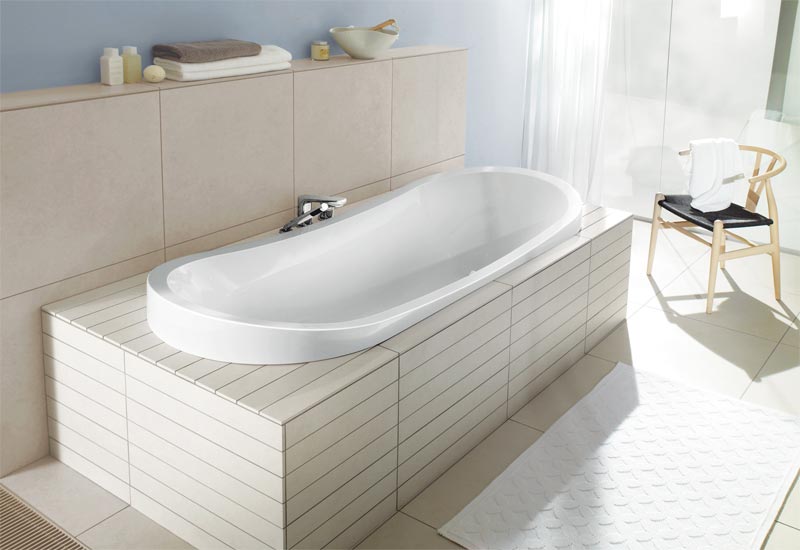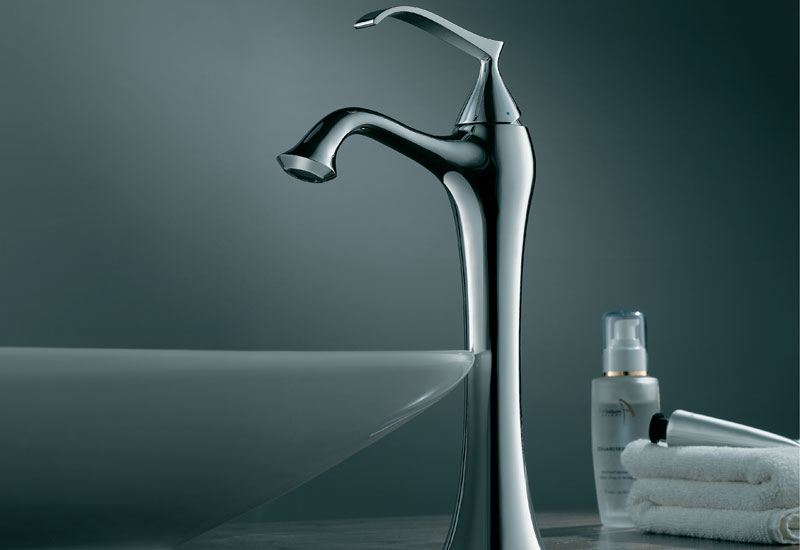What are the trendiest bathroom materials for 2012?
Thorsten Bies: Mix ceramic, wood, glass and mosaic for a timeless bathroom design. Natural-looking designs are the most requested in the Middle East.
Ivan Zupanovic: We have just introduced a new ceramic that is lighter, but also allows more precise contours while still being a natural ceramic and retaining the traditional production process.
Phillip Payne: New materials in the bathroom are providing designers with many options to bring warmth into a previously minimalist environment. The use of vibrantly-coloured glass tiles, glass mosaics, braided glass mosaics and stained glass for example, are becoming popular choices for introducing accented tones.

| Advertisement |
For shower walls, we see more custom designs being used; specially-created mosaics or logos are very popular. For ceramics, we are seeing the return of colour such as bold metallics in black, gold and platinum.
Classic monochrome is back too, with black and white sanitaryware and brassware available. The bathroom is being transformed into a softer space, offering more comfort and a far less clinical ambiance.
Ben Bryden: Granite, marble, natural stone and bronze all age beautifully over time and meet the needs of consumers looking for that natural finish.
Firas Ibrahim: Raw materials such as concrete, oak and glass create a natural ambience through their honesty and simplicity. New directions are being explored through the use of materials such as Corian for its flexibility and versatility. It was traditionally used in sanitary ware but has evolved into furniture allowing designers to create holistic aesthetic concepts.
How can hotels maximise space in a bathroom area?
Thorsten Bies: The key to maximising space is to provide a number of flexible bathroom offerings, and a range of bespoke solutions for the individual space.
Ivan Zupanovic: Wall-hung ceramics offer an effective way of creating at least the illusion of space, as they keep the floor visible and any clutter from pipe-work and plumbing is neatly concealed behind the wall.
Most hotel guests will expect to be able to relax in a bath, but if the space is tight opt for a compact model that still offers a generous depth. Rather than a full shower enclosure, a low-level shower tray with a frameless glass screen opens up the room and enables light to circulate, while ensuring that separate wet- and dry areas are maintained.
The other crucial thing to bear in mind is storage. When away from home guests like to spread out and not have to worry about packing items away after every use. However, lots of clutter will only make the space feel more restricted so opt for clever solutions that maximise storage while not making the room feel too cramped.
Open shelving beneath the washbasin is a good solution that provides convenient storage for keeping items such as toiletries and clean towels within easy reach. It also helps create a luxurious, contemporary look in even the smallest of bathrooms.
Phillip Payne: Our clients tend to regard showering as a high point of the hotel guestroom experience. Therefore, Dornbracht bathrooms are luxurious spaces which entail more not less space.
So why does a shower area need to be isolated, cramped behind a glass door in a dedicated space? The wet area is only wet for a limited time each day. The development of the linear shower drain allows much more design freedom. We are seeing some beautiful bathroom designs come online where the shower area is part of the whole bathroom space. We would like to encourage the design community to keep breaking down the dividing walls and open up these small spaces.
Article continues on next page …










 Search our database of more than 2,700 industry companies
Search our database of more than 2,700 industry companies









